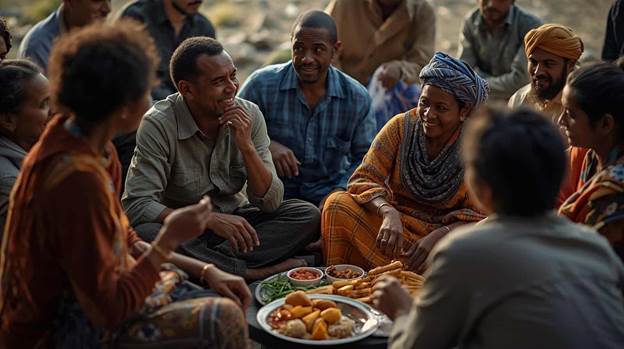Cultural beliefs shape how people perceive the world, behave in social settings, and make moral judgments. These shared values influence traditions, rituals, and everyday decision-making within a community. The psychology of cultural belief formation explores how these ideas are created, transmitted, and sustained through generations. By understanding this process, we gain insight into human behavior, social harmony, and global diversity.
Table of Contents
This article explores how cultural beliefs develop, their psychological foundations, their impact on societies, and how they adapt in a rapidly changing world.

The Definition and Essence of Cultural Beliefs
Cultural beliefs are collective ideas about what is true, right, or valuable within a specific society. They guide actions, define roles, and influence how individuals interact with their environment. Psychologically, they serve as mental frameworks that help people interpret the world around them. These beliefs are often rooted in history, religion, and social experiences that have been passed down through generations.
Secondary Keyword: social norms and values
Cultural beliefs differ across societies because each community has unique social norms and values. For example, while some cultures prioritize community cooperation, others emphasize personal achievement. These belief systems become internalized through family, education, and media, shaping behavior from childhood to adulthood.
The Historical Evolution of Cultural Beliefs
The formation of cultural beliefs has deep historical roots. Early human societies developed beliefs to explain natural phenomena and social order. Over time, these ideas evolved into organized religions, moral codes, and cultural traditions.
Psychologists believe that cultural beliefs emerged as survival mechanisms, providing group cohesion and identity. Ancient rituals, myths, and taboos helped regulate behavior, ensuring cooperation among members of early societies.
Cultural Transmission Across Generations
Cultural beliefs are not static they are continuously transmitted and reshaped through social learning. Parents, teachers, and community leaders play a major role in passing down traditions. Modern psychology identifies three primary ways beliefs are transmitted:
- Imitation – observing and copying behaviors from role models
- Instruction – learning beliefs explicitly through education or storytelling
- Internalization – adopting beliefs as part of one’s personal identity
The Psychology Behind Belief Formation
The human brain is wired to seek patterns and explanations, leading to the creation of belief systems. Cultural beliefs satisfy this need by providing meaning, reducing uncertainty, and promoting social belonging.
Secondary Keyword: cognitive psychology and culture
From a cognitive psychology perspective, belief formation involves perception, memory, and emotional experiences. When individuals encounter consistent messages from family or society, their neural networks strengthen these ideas, turning them into lasting beliefs.
Moreover, social identity theory explains that people adopt cultural beliefs to feel accepted within their groups. Believing in shared traditions reinforces group membership and emotional security.
The Role of Emotions in Cultural Beliefs
Emotions play a powerful role in how cultural beliefs are formed and maintained. Feelings such as fear, pride, and empathy drive individuals to follow collective values. For example, religious beliefs often use emotional experiences like awe or gratitude to reinforce faith. Similarly, cultural celebrations create joy and connection, strengthening shared beliefs.
Emotional reinforcement makes cultural beliefs resilient even in the face of scientific evidence or global change because they are deeply tied to personal identity and community belonging.
Cultural Beliefs and Behavioral Adaptation
As societies evolve, cultural beliefs adapt to new realities. Globalization, migration, and technology expose people to different worldviews, leading to a blend of traditional and modern ideas.
For instance, younger generations may reinterpret cultural practices to align with modern values such as gender equality or environmental awareness. This adaptive nature shows the flexibility of cultural psychology, helping societies maintain stability while embracing progress.
Secondary Keyword: cross-cultural psychology
Cross-cultural psychology studies how people from different cultures interpret similar situations differently. A simple gesture like eye contact may be seen as respectful in one culture but impolite in another. These differences reveal how cultural beliefs shape behavior and perception on a global scale.

Benefits of Understanding Cultural Beliefs
Recognizing the psychology behind cultural beliefs helps build empathy and social cohesion. When people understand why others think or act differently, they are less likely to judge and more likely to connect.
Key benefits include:
•Improved cross-cultural communication
•Enhanced workplace diversity and collaboration
•Reduced prejudice and stereotyping
•Promotion of mental and emotional well-being through cultural identity
In a globalized world, this understanding promotes respect and unity despite cultural differences.
Challenges in Cultural Belief Systems
While cultural beliefs strengthen communities, they can also create barriers. Strongly held traditions may resist necessary change or promote exclusion. Psychological biases such as confirmation bias can make individuals reject new ideas that challenge long-held beliefs.
For instance, cultural resistance to gender equality or modern medicine can hinder social progress. The key lies in balancing cultural preservation with openness to innovation and critical thinking.
Real-World Examples of Cultural Belief Adaptation
- Japanese Work Culture – Traditionally based on collective harmony and dedication, Japan’s younger workforce is redefining this belief toward better work-life balance.
- Indigenous Environmental Beliefs – Many Indigenous communities view nature as sacred, influencing modern sustainability movements.
- Health and Healing Practices – Cultural beliefs about illness vary; some societies combine traditional remedies with modern medicine, blending ancient wisdom and science.
These examples show how psychological and social dynamics shape belief evolution over time.
Conclusion
Cultural beliefs are the foundation of human identity and community life. Their formation is deeply psychological, driven by cognition, emotion, and social influence. Understanding these processes helps bridge cultural divides and promote global empathy. As humanity becomes more interconnected, studying the psychology of cultural belief formation is essential to maintaining both diversity and harmony. To explore further, engage with cross-cultural studies and learn how beliefs shape societies worldwide.